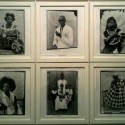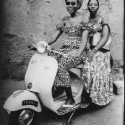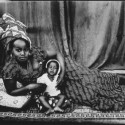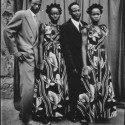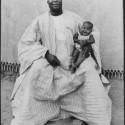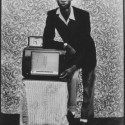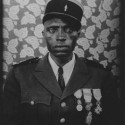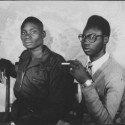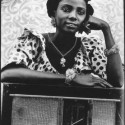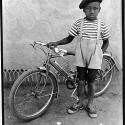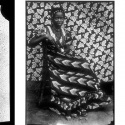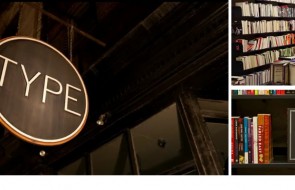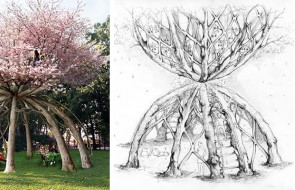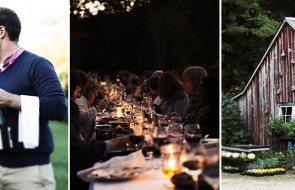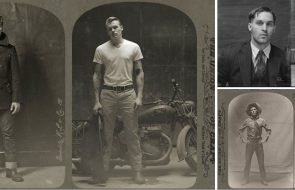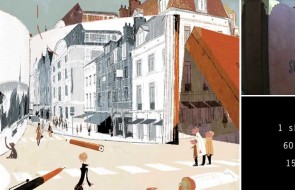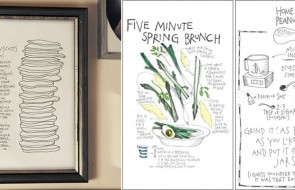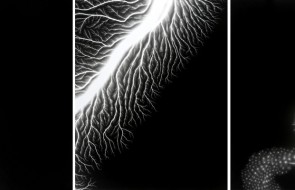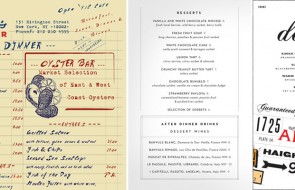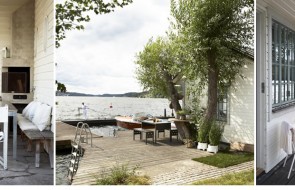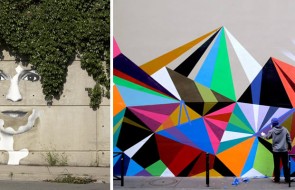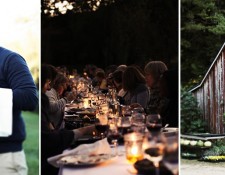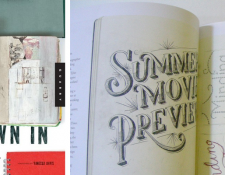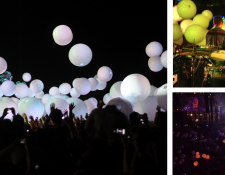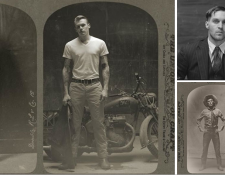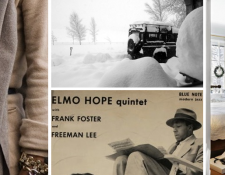Seydou Keita
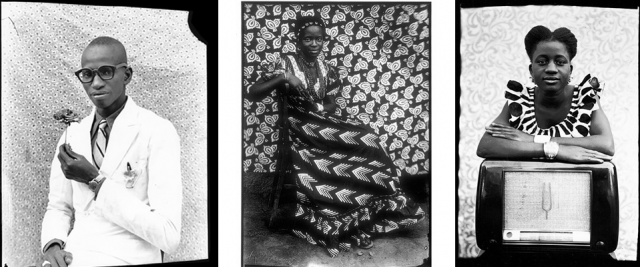
Last month at Art Basel Miami, one of my very favorite exhibitions was the work of Malian photographer Seydou Keita. At first I was simply aesthetically taken in, and then I found out the history of Keita and was totally hooked.
First, a brief background on Keita’s work itself. Keita, originally trained as a carpenter, set up a portrait studio in 1948 to take photos for people to send to their relatives. This was common during this period in Mali, as many were leaving their families in the country and moving to the city, where they would then send back photos of themselves.
What is significant about this is that it means that Keita’s photographs were not actually made as art, but rather as commercial prints, which one might never guess upon first inspection, since the images are so rich and carefully composed. With their display of beautiful textiles, they are highly reminiscent of Matisse’s work, which often featured patterned textiles (Matisse’s family were weavers and he collected textiles) in both the foreground and background.
Even more interesting is that Keita was operating in a complete vacuum as far as art historical or photographic education, meaning that his bold compositions and use of textiles could not have been influenced by the likes of Matisse, or anyone else for that matter. In fact, Keita has said that his original backdrop for the photos was simply his bedspread.
However, despite his lack of training and the fact that he made portraits to make money (rather than as “art for art’s sake”), his photos perfectly capture a remarkable time in Mali’s history as it went from French-ruled to independent and Malians were finding and forming their identity as formerly French-ruled Africans with a newfound exposure to the West. Keita’s subjects are seen alternately in traditional dress and Western-style suits proudly presenting stock props Keita provided including radios and plastic flowers.
Now, for the juicy story of how Keita’s work became known to the world. In the 1960s, after becoming modestly successful as a portrait artist, the newly independent national regime asked Keita to work for the government. He refused, and when a general showed up at his studio to intimidate him, he buried his 7,000+ negatives in a metal box in his backyard before going to work for the government.
His portraits remained entirely internationally unknown until the 1990s, when a French photojournalist visited Mali and discovered his work and they quickly came to the attention of Jean Pigozzi (recently featured in Vanity Fair for his extravagant bachelor lifestyle and art collection), who began to have them printed from the negatives, shown in galleries, and printed in a book about the artist, which quickly made him the new toast of the African-art-collecting world. The story and controversy goes on, but I’ll leave you with that, and you can read more this NYT article if you’re curious for all the details…
[PS-- If you've been following this blog for a while, and Keita's work looks familiar, you may be remembering the post on contemporary Malian photographer Malick Sidibe. As it turns out, Sidibe was heavily, and undeniably, influenced by Keita, who was working in Bamako from the 1940s through the 1960s-- essentially just one generation ahead of Sidibe.]

